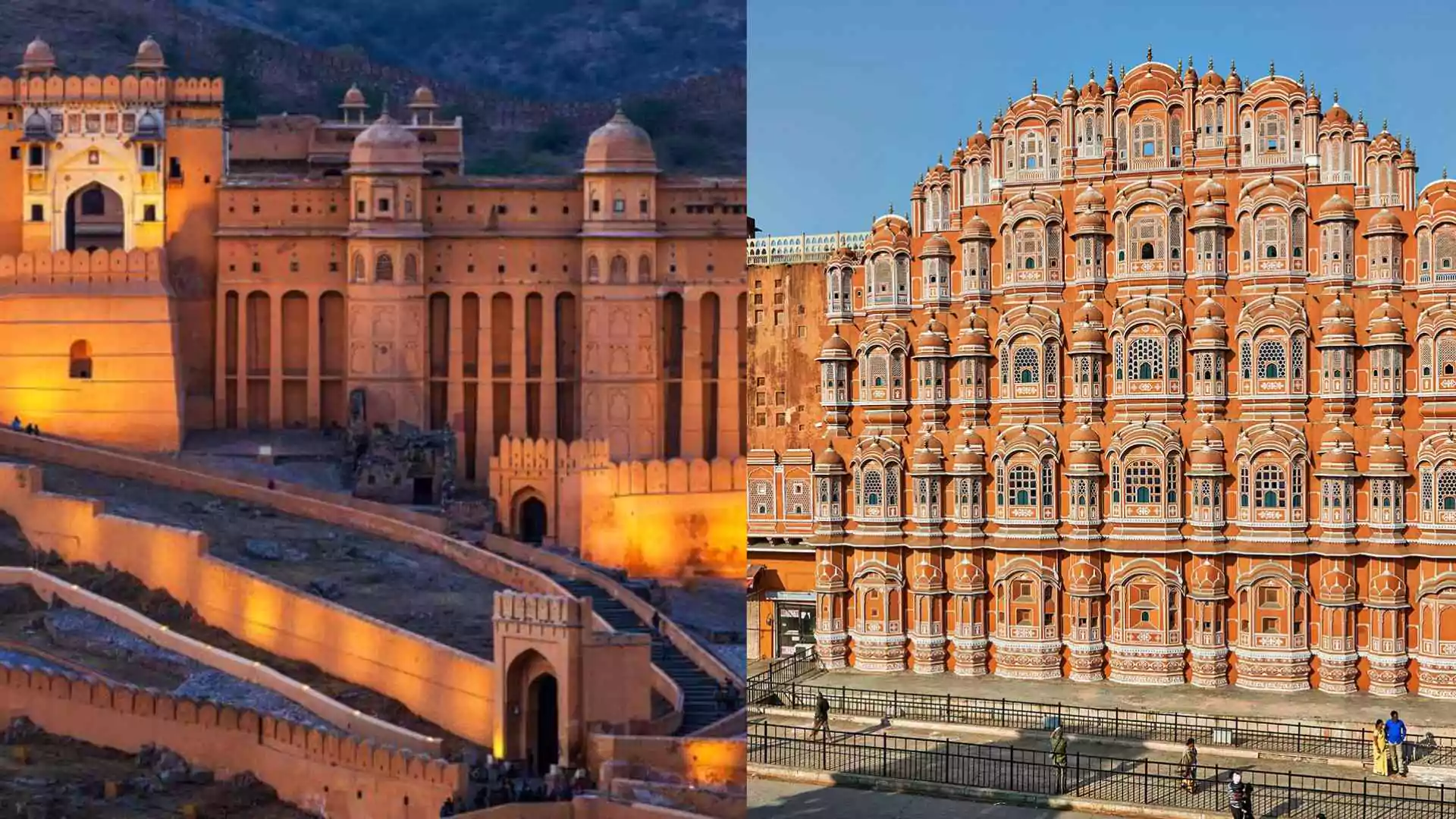On October 7, 2023, Hamas launched a large-scale attack on Israel, with hundreds of militants infiltrating communities near the Gaza Strip. The assault resulted in approximately 1,200 deaths, and over 250 individuals were taken to Gaza as hostages, according to Israeli reports. In retaliation, Israeli air and artillery strikes have killed more than 33,000 Palestinians in Gaza, according to the health ministry controlled by Hamas. As of now, the conflict remains unresolved. Let’s take a closer look at the major events in the Israel-Gaza conflict, highlighting key incidents, the reasons behind the war, the number of casualties, and other critical details.
How and Why Was Israel Created?
In 1948, after Britain failed to resolve growing tensions in the region, it withdrew, and Jewish leaders declared the establishment of the State of Israel. The state was intended to provide a safe refuge for Jews escaping persecution and to serve as their national homeland.
Tensions between Jewish and Arab militias had been escalating for months. The day after Israel’s independence was declared, five Arab nations attacked. During this conflict, hundreds of thousands of Palestinians fled or were expelled from their homes in what they refer to as Al Nakba, meaning “The Catastrophe.”
By the time a ceasefire was reached the following year, Israel controlled much of the land. Jordan occupied the West Bank, and Egypt took control of Gaza. Jerusalem was divided, with Israeli forces in the West and Jordanian forces in the East. The absence of a lasting peace agreement led to further wars and ongoing conflict over the following decades.
The Israel-Palestine conflict, often referred to as the “world’s most intractable conflict,” is rooted in a dispute over land claimed by Jews as their biblical birthright and by Palestinians seeking self-determination. Despite numerous attempts to end the conflict, no peace settlement has been achieved.
The History of the Israel-Palestine Conflict:
1897-1947: Pre-State Israel
- Jews have been persecuted throughout history due to their religious beliefs and foreign culture.
- In 1897, Jews started a movement called a Zionist movement, to escape persecution and establish their own state in their ancestral homeland, Israel. The World Zionist Organization was created to advocate for the establishment of a Jewish homeland in Palestine.
- As a result, a large number of Jews started flowing into Palestine and they bought land and started settling down there.
- By 1916, Palestine came under British control after the Sykes-Picot Agreement (a secret agreement between Great Britain and France). This led to the division of the old Ottoman Turkish Empire.
- Later, through the Balfour Declaration, the British foreign secretary James Balfour agreed to the establishment of a Jewish homeland.
- After the Nazis gained power in Germany in the 1930s, the Jews influx to Palestine took a major turn with hundreds of thousands of them resettled from Europe to Palestine. Arabs saw this as a threat to their homeland and they fought bitterly with them. As the British Government remained as a mute spectator, violence reached its peak.
- In 1947, the British Government referred the question of the future of Palestine to the United Nations. UN voted to split the land into two countries. Jewish people accepted the agreement and declared the independence of Israel.
1948: Israel’s War of Independence
Israel declared its independence on May 14, 1948. The declaration was followed by an invasion by neighboring Arab states, including Egypt, Jordan, Syria, Iraq, and Lebanon. The war resulted in Israel’s survival and expansion of territory. It also marked the beginning of the Arab-Israeli conflict and resulted in the displacement of an estimated 700,000–800,000 Palestinian Arabs to many surrounding Arab countries.
1964: Creation of the Palestinian Liberation Organization
Jordan controlled the West Bank and Jerusalem’s holy sites, and Egypt controlled the Gaza Strip. But it fell short of solving the palestinian crisis, which led to the formation of Palestinian Liberation Organisation in 1964.
PLO was founded, with the aim of freeing Palestine from clutches of Israel and Jewish dominance and setting up the dominance of Muslim Brotherhood in the Arab world.
The United Nations granted the PLO observer status in 1975 and recognizes Palestinians’ right to self-determination.
1967: Six-Day War
The Six-Day War, which lasted from June 5 to June 10, 1967. Israeli forces seized the Golan Heights from Syria, the West Bank & East Jerusalem from Jordan and Sinai Peninsula & Gaza strip from Egypt. it resulted in Israel’s capture of key territories, including East Jerusalem and the West Bank, the Gaza Strip, the Golan Heights, and the Sinai Peninsula. Approx. 45,000 civilians (10% of Gaza’s population) fled or were expelled by Israel.
1972: Munich Olympics Massacre
The first major Palestinian terrorist attack on Israel was carried out by the Palestinian terrorist group Black September, a faction of the PLO. 17 total casualties happened during this Massacre.
1973: Yom Kippur War (October War)
Egypt and Syria launched a surprise attack on Israel during Yom Kippur, the holiest day in Judaism. The conflict resulted in a ceasefire, and Israel eventually withdrew from the Sinai Peninsula as part of the 1979 Camp David Accords.
1979: Camp David Accords: Peace Treaty between Egypt and Israel
Israel and Egypt signed a peace treaty, leading to Israel’s withdrawal from the Sinai Peninsula.
1987: Founding of Hamas
Hamas is a violent offshoot of Egypt’s Muslim Brotherhood seeking to fulfill its agenda through violent jihad. It is regarded as a terrorist organization by the U.S. government. In 2006, Hamas won the Palestinian Authority’s legislative elections. It ejected Fatah from Gaza in 2007, splitting the Palestinian movement geographically, as well.
1982: First Lebanon War
The First Lebanon War, also known as the 1982 Lebanon War, was a military conflict in 1982 between Israel and various Lebanese factions. Israel eventually withdrew from southern Lebanon in 2000.
1987: First Intifada
The First Intifada was a period of widespread Palestinian protests, civil disobedience, and acts of violence and terrorism against Israelis that began in December 1987 and continued into the early 1990s.
1993: Oslo Accords
Under the Oslo Accords, Israel and the PLO agree to officially recognize each other and renounce the use of violence. The Oslo Accords also established the Palestinian Authority, which received limited autonomy in the Gaza Strip and parts of the West Bank.
2000-2005: Second Intifada
The Second Intifada, also known as the Al-Aqsa Intifada, was a period of intense conflict and Palestinian uprising against Israeli rule that began in late September 2000 and continued for several years. The Second Intifada resulted in a high number of casualties on both sides, with close to 1,000 Israelis killed or injured by Palestinian terror attacks, including suicide bombings and bus bombings.
2005: Israel Withdraws from the Gaza Strip
Israel begins a unilateral withdrawal of Jews from settlements in Gaza. However, Israel kept tight control over all border crossings (blockade).
2006: Second Lebanon War
Conflict erupts between Israel and the Iranian-backed terrorist group Hezbollah in Lebanon following an ambush on Israeli soldiers along the border that killed three soldiers as well as led to two being taken hostage. The 50-day war ended with a ceasefire and a UN peacekeeping force deployed in southern Lebanon.
2007: Hamas Takes Control of Gaza
In June, Hamas, considered a terrorist organization by Israel, the U.S., U.K., EU, and others, took control of the Gaza Strip
2008-2009: Operation Cast Lead (Gaza War)
From December 27, 2008 to January 18, 2009, Israel launched a military operation in response to rocket attacks from Gaza. 100,000 people became homeless. Also 10 soldiers, 3 civilians were died. 46,000 homes, 34 hospitals and clinics, 214 schools, 52 mosques, and churches were damaged.
2012: Operation Pillar of Defence
From November 14 to November 21, 2012, Israel launched an operation to target terrorists and rocket launchers in Gaza. 97 schools, 49 mosques and churches, and 15 hospitals and clinics were damaged. More than 100 civilians died.
2014: Operation Protective Edge
In June 2014, three Israeli teenagers—Naftali Fraenkel, Gilad Shaer, and Eyal Yifrah – were abducted and killed by Hamas terrorists while hitchhiking in the West Bank. His murder by Hamas led to a widespread Israeli crackdown on Hamas terrorists in the West Bank. 2,251 killed from Arab side & 67 soldiers, 6 civilians were killed from Israel side.
2021 Israel-Palestine crisis
15,000 homes, 58 schools, 9 hospitals, and 19 clinics were damaged. Also, 113,000 internally displaced. More than More than 100 civilians died.
2023 to Present : Israel-Hamas war
More than 39,000 people were killed on Arab Side. More than 876 civilians and 756 soldiers were killed on the Israeli side.
The Israel-Palestine conflict has persisted for more than a century, with its roots deeply embedded in disputes over land, identity, and self-determination. The creation of Israel in 1948 marked the beginning of intense confrontations, displacements, and a series of wars. Despite numerous efforts for peace, including international mediation and treaties, a lasting resolution remains out of reach. The 2023 conflict is yet another chapter in a long and painful history, with both sides suffering heavy losses. Until both Israelis and Palestinians find a way to coexist peacefully, the cycle of violence will likely continue, leaving peace a distant and uncertain goal.
Also read: Who Is Marques Brownlee? TIME’s Top AI Influencer and Tech Review Guru























